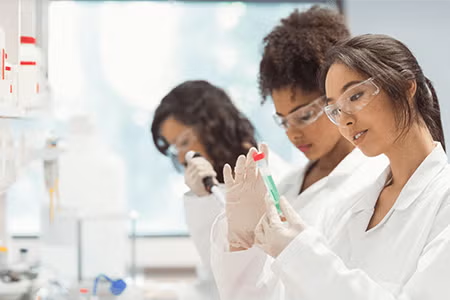Chemistry plays an essential role in the products we use every day. From high-performance construction materials that enhance building durability and energy-efficiency, to packaging that helps keep food fresher for longer, to myriad household and personal care products, and more, chemical innovations help grow a more sustainable future.
Pressure to eliminate chemicals
However, in recent years, some chemicals used in consumer products and sold by retailers around the country have come under increased scrutiny, leading to pressure on product manufacturers, retailers and brands to reduce or eliminate certain chemicals in the products they make and sell.
Additionally, media coverage may raise alarm about specific chemicals, even when not fully based on science.
These efforts can have unfortunate outcomes, leading consumers to think that certain chemicals in the products they use may be harmful. So how can consumers learn about the safety and potential risks of the products they purchase and use?
Are the chemicals in the products I buy safe?
The fact is, the mere presence of a chemical in a product does not imply that a chemical will cause harm. A chemical can’t simply be classified as “dangerous” or “safe;” it depends on a variety of factors. These include the amount of the chemical in the product, as well as how the product is used and the extent to which product users may – or may not – come in contact with the chemical ingredients.
To determine a chemical’s safety, researchers and experts primarily rely on two key categories of information – hazard and risk. In basic terms, hazard is the potential of something to cause harm, while risk is the likelihood of harm actually occurring.

How do scientists determine what sorts of chemical exposures have the potential to cause harm? Rigorous scientific research, including experimental and epidemiology studies, are the basis for sound decision making on the use, safety and development of chemicals. Through this research, real-world safe exposure levels are established for ingredients used in products.
Chemicals undergo stringent regulatory review
But scientific studies and assessments of a chemical’s hazard or risk profile may seem abstract when a consumer’s primary concern is, “Are the products I am purchasing safe to use?”. So how can consumers, retailers, and brand owners feel more confident that the products they buy, sell and use are safe?
- First, it’s important to know that chemicals undergo stringent regulatory review before they are brought to market. In fact, chemicals in commerce are subject to government oversight by federal agencies, including the U.S. Environmental Protection Agency (EPA), the Food and Drug Administration (FDA) and the Consumer Product Safety Commission, under more than a dozen federal laws and regulations. Today, any chemistry introduced or imported into the U.S. must undergo rigorous review and approval processes by these agencies.
- Additionally, American Chemistry Council (ACC) members are required to adhere to the Responsible Care® Product Safety Code. This Code outlines a set of management practices that companies follow to guide development of safe products, which includes conducting risk assessments to make sure chemicals are safe for their intended use; continually reviewing and assessing their product portfolios for safety; and considering product safety and sustainable chemistry throughout the product innovation process.
- ACC members also work with product manufacturers, retailers and others along the chemical value chain to openly and transparently share information about potential hazards and risks regarding the products they manufacture, to increase confidence in their safety.
Finding information on specific chemicals
Looking for more information on specific chemicals? ACC’s website, ChemicalSafetyFacts.org, includes science-based information on how a variety of chemicals may be used in consumer products, the important benefits that they can provide, and safety testing and evaluations by government agencies that these chemicals have undergone.
Our nation depends on the products and innovations made by America’s chemical industry, which makes modern life possible and supports national priorities like renewable energy, reliable infrastructure, modern healthcare, and much more. The chemical industry is a source of innovation that can contribute to a healthier, safer, more sustainable future.